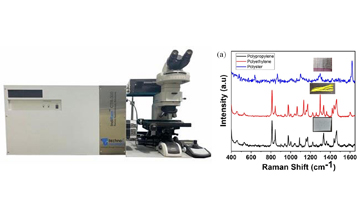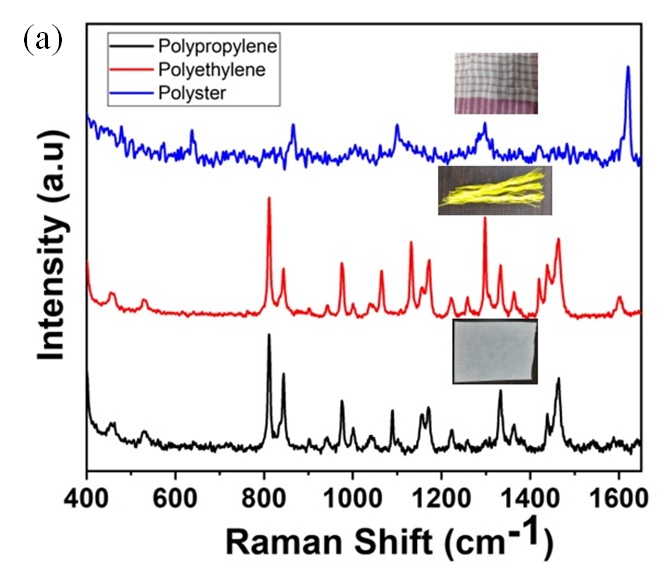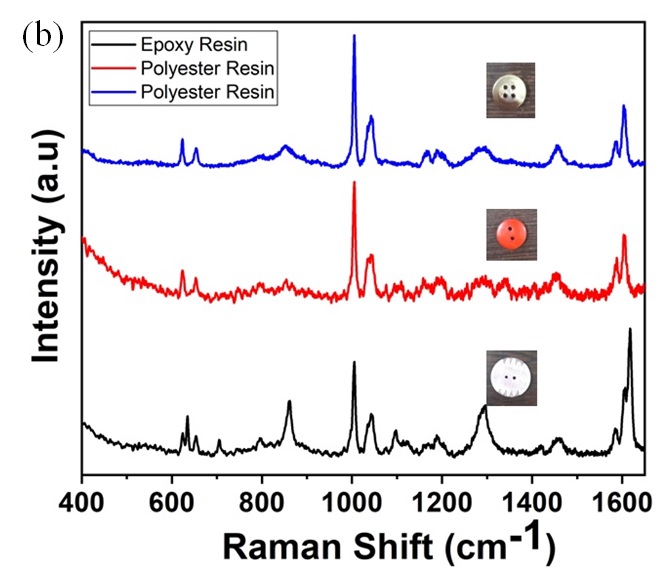Introduction
Due to the continuous advancements, Raman Spectroscopy has been utilized in various branches of forensic science, including toxicology, trace analysis, drug detection, and document authentication. One of the key benefits of Raman spectroscopy is its ability to identify a range of sample types, including liquids and gases. Characterization only requires a small amount of sample, typically on the order of milligrams, and the turnaround time for analysis is very fast. Additionally, Raman spectrometers can be portable or handheld, enabling on-site analysis with immediate results. It is worth noting that Raman spectroscopy meets the Daubert standard for admissibility in U.S. courts, as it has an extensive number of peer-reviewed publications and can establish error rates [1]. In this study, we aim to characterize the fibres and buttons which could potentially be recovered from from accident and crime scenes.

Materials and Methods
Raman Spectroscopy of the battery materials was performed using an IndiRAM CTR- 500 Raman spectrometer, TechnoS Instruments Ltd., Jaipur, India. A laser excitation source of 785 nm emission wavelengths was used. Different kinds of fibres and buttons from various clothing were characterized.
Results and discussion
Fig. 1. (a) shows the Raman spectra acquired from white cloth, yellow fibre and handkerchief respectively. White cloth is made up of polypropylene, 1438, 1464 cm -1 peak belongs to CH 2 bending, 1364 and 1333 cm -1 corresponds to CH 2 wagging and twisting, 1167 and 1152 cm -1 is attributed to C-C stretching respectively [2]. Yellow fibre is made up of polyethylene in which the peak position 1463, 1438, and 1420 cm -1 belong to CH 2 bending, 1131 and 1064 cm -1 belong to C-C stretching, 1297 cm -1 is due to CH 2 twisting [2]. From the Raman Spectra, Handkerchief was found to be made up of of polyester fibres.


Fig.1 Raman Spectra of (a) various cloth and fiber (b) Buttons from different cloth
1620 cm -1 of handkerchief belong to C-C aromatic ring of polyester fibre [3], CH 2 bending give rise to 1418 cm -1 peak [3]. Fig. 1 (b) shows the Raman spectra from buttons of different cloths. Pink button buttons are made up of epoxy resin [4]. Red and whitish brown buttons are made up of Polyester resin with styrene. 1603 and 1584 cm -1 peak is attributed to C=C aromatic of both Unsaturated Polyester and styrene [5]. 1404 and 1630 cm -1 observed in red button are due to C-H and C=C band of Styrene respectively [5], but in whitish brown button only 1630 cm -1 is observed. Though Red and whitish brown button are made up of same material, difference in the spectrum must be attributed to difference in curing process. These differences expected to play a crucial role in forensic trace analysis.
Conclusion
In this application note, quick characterisation of various fibres and button of cloths have been carried out by Raman Spectroscopy.
Reference
[1] D. E. Bugay, M. Cipoletti, Field-Based Raman Spectroscopy: Legal Precedence and Potential Impact on Prosecution for Narcotics Identification, Thermo Fisher Scientific Inc., 2012.
[2]T Furukawa, H Sato, Y Kita, K Matsukawa, H Yamaguchi, S Ochiai, H. W. Siesler, & Y Ozakipolym J 38, 1127–1136 (2006).
[3]Puchowicz, D. & Cieslak, M. doi:10.5772/intechopen.99731
[4]De Andrade, J. E., Machado, R., Macêdo, M. A. & Cunha, F. G. C. Polimeros 23, 19–23 (2013).J.E.
[5]Skrifvars, M., Niemelä, P., Koskinen, R. & Hormi, O. J Appl Polym Sci 93, 1285–1292 (2004).

